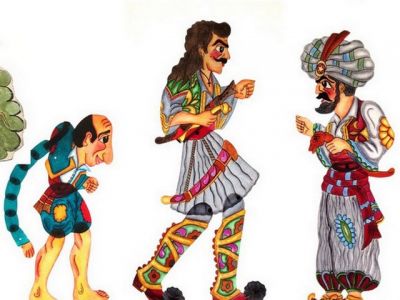DIVISIONE ACQUI, A SHARED MEMORY
In the face of a tragedy, the evidences of those who have personally experienced pain or have lived it through the painful stories of their loved ones strike us much more than historical facts.
As human beings, it is impossible not to feel empathy for those who have suffered injustices and abuses or who have sacrificed their own lives for the cause they believed in. Thus, even in the darkest moments, relationships are established and ties are tightened, one's ethics is allowed to prevail over ideologies and fear, glimmers of light and hope can be glimpsed.
In commemorating the Acqui Division, the human closeness shown by the people of Kefalonia should be remembered as much as the sad story of the Italian soldiers. There are endless tales of the islanders who hid, protected, fed the Italian soldiers at the risk of their own lives. Equally numerous are the painful stories of those who have lost family members due to the reprisals of the Germans. Despite the war and the invading role of the Italians, the militaries of the Acqui Division are not remembered with anger and contempt, but with the smile that is dedicated to young people far from their country, more men than soldiers, capable of acts of kindness and to make themselves loved.
SUMMER EVENINGS AND PLAYS OF LIGHT. THE THEATER OF KARAGIOZIS
Shadow theatre is a very popular form of entertainment in Greece on warm summer evenings. The colorful posters with Karagiozis, the main protagonist of these itinerant popular shows, are in all the villages and the little ones enthusiastically participate in the performances amidst laughter, moments of excitement for the adventures of the protagonists and reflections on the topics covered.
KOURELOUDES, PATTERNS OF COLOURS AND TRADITION
What is a kourelou?
First of all, it is a carpet made of colored rags which is typical of the Balkan area. But if you look at it carefully, it is much more: it is a pattern of ideas, folklore and new boho, very chic design! For us it is also a new project for our guests, a piece of real Greece you can always carry with you.
FREEDOM OR DEATH. THE TSAROUCHI'S HYMN TO INDEPENDENCE
THE ORTHODOX LENT, A CELEBRATION OF LIGHT AND LIGHTNESS
Have you ever wondered why kites fly on Clean Monday? And what does Kyra Sarakosti, a typical Orthodox Lent biscuit, represent?
With the Καθαρά Δευτέρα the Carnival ends and a long period of fasting begins. This path of preparation to Easter Sunday is rich in meaning and deeply felt, an opportunity for reflection and change.
THE SCENT OF HALVA. ALL THE SWEETNESS OF THE "CLEAN MONDAY"
Kathari Deftera, or "Clean Monday", is one of the most important holidays in the Greek liturgical calendar and certainly one of our favourites. Growing up in a Catholic country and accustomed to a definitely gloomier and more introspective beginning of Lent, we could not be anything but (pleasantly) surprised by a celebration of reconciliation, regeneration and raising of the spirit characterised instead by outdoor excursions, flights of kites and good shared food.
MARTAKIA, COLOURFUL SPRING BRACELETS
It is surprising how many good luck charms, amulets and references to health appear in the Greek folk tradition.
Today we are featuring the white and red March bracelet called μαρτακι, which according to popular custom is worn on the wrist, ankle or in some areas on the big toe so that the wearer does not stumble. Traditionally, this bracelet would protect the wearer from the first sun and the whims of the spring season. In fact, red recalls the color of healthy cheeks while white symbolizes the purity of the complexion.
THE DAYS OF ALCYONE
On a Greek island, especially in winter, time seems to go slower than in the rest of the world. The rhythms are marked by the conditions of the sky and the sea and reality finds an explanation in an intricate intertwining of myths, memories, history, traditions and science. It so happens that the warm temperatures of these days are not only determined by meteorological causes but also by a couple so in love as to involuntarily offend the gods, a compassionate Zeus and a beautiful sea bird, the Alcyone (or kingfisher).
OLIVE GREEN KEFALONIA
In autumn, Greece is tinged with olive green, gold and earth tones.
It is in this period that villages and families come together for an important annual event, the olive harvest. An activity that is part of Greek culture, handed down from generation to generation and represents not only a commitment, but also an opportunity to meet and spend time with family, friends and neighbors.










